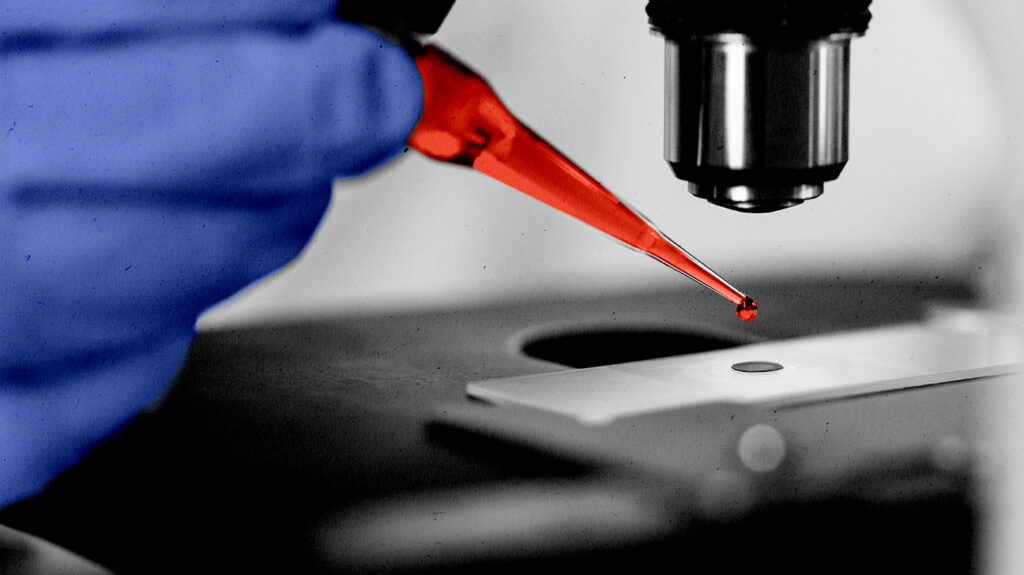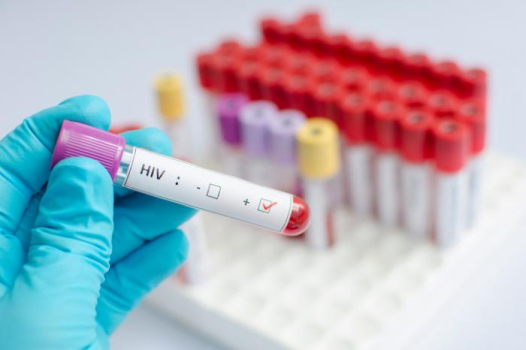Site uses cookies.
Learn moreWhat to know about leukemia
11 August 2022

Leukemia is cancer of the blood and bone marrow. It happens when the body produces too many white blood cells. Here, learn about the causes…
Leukemia is a cancer of the blood or bone marrow, which produces blood cells. Leukemia happens when there is a problem with blood cell production. It usually affects the leukocytes, or white blood cells.
Leukemia more often affects people aged over 55 years, but it is also the most common cancer in those aged under 15 years.
The National Cancer Institute estimates that 60,650 people in the United States will receive a diagnosis of leukemia in 2022. It also predicts that leukemia will cause 24,000 deaths in the same year.
There are different types of leukemia, and the outlook depends on the type. Acute leukemia develops quickly and worsens rapidly, but chronic leukemia gets worse over time.
In this article, we provide an overview of leukemia, causes, treatment, type, and symptoms.
Causes
Leukemia develops when damage occurs to the DNA of developing blood cells, mainly white cells. This causes the blood cells to grow and divide uncontrollably.
Usually, healthy blood cells die after a while, and new cells develop in the bone marrow and replace them.
In leukemia, the blood cells grow too quickly, do not function effectively, and do not die at a natural point in their life cycle. Instead, they build up and occupy more space.
As the bone marrow produces more cancer cells, they begin to overcrowd the blood, preventing the healthy white blood cells from growing and functioning normally. This also affects the platelets and red blood cells.
Eventually, the cancerous cells outnumber healthy cells in the blood.
Risk factors
Experts often do not know why leukemia happens, but environmental and genetic factors likely play a role.
While genetic features may not cause leukemia, they may make it more likely to appear in certain conditions, for example, after exposure to some chemicals or infections.
Risk factors will depend on the type. Some risk factors are avoidable, but others are not.
Scientists have found links between leukemia and various factors, although more research is needed to confirm most of them.
They include:
- a history of certain infections, such as the Epstein-Barr virus
- exposure to ionizing radiation, for example, during radiation therapy for a previous cancer, background radiation, or being near a site where people were testing nuclear weapons
- having a high or low birth weight
- being male, as rates are higher among males
- exposure to pesticides and air pollution
- having parents who smoke tobacco
- having a cesarean delivery before labor started
- having a genetic condition such as Down syndrome or Klinefelter syndrome
- exposure to benzene
- a previous history of chemotherapy
- having already had one type of blood cancer
Types
Doctors classify the different types of leukemia according to:
- the type of blood cell they start in
- whether they are acute (grow quickly) or chronic (grow slowly)
- if they occur in a child or an adult
Chronic and acute leukemias
In acute leukemia, developing cells multiply quickly and collect in the marrow and blood. A blood test will show that more than 20% of blood cells are blasts. This means they are immature — having exited the bone marrow too soon — and are not functional.
Chronic leukemia progresses more slowly. It allows for the production of more mature, useful cells. In a blood test, fewer than 20% of cells are blasts.
Lymphocytic and myelogenous leukemias
Lymphocytic leukemia occurs if cancerous changes affect the type of bone marrow that makes lymphocytes. A lymphocyte is a white blood cell that plays a role in the immune system.
Myelogenous leukemia happens when the changes affect bone marrow cells that produce blood cells rather than the blood cells themselves.
Common types
There are several types of leukemia. They include:
Acute lymphocytic leukemia
Children under 5 years have the highest risk of developing acute lymphoblastic leukemia (ALL). However, it can also affect adults, typically over the age of 50. Around 60% of cases are in children..
Chronic lymphocytic leukemia
Chronic lymphocytic leukemia (CLL) mostly affects people over 70 years of age, but younger adults can also develop it. About 25% of new cases of leukemia are CLL. It is more common in males than in females and rarely affects children..
Acute myelogenous leukemia
Acute myelogenous leukemia (AML) is more common in adults than children and is more likely to affect males than females. Overall, however, it is rare.
Chronic myeloid leukemia
Chronic myelogenous leukemia (CML) accounts for around 15% of all leukemia cases in the U.S. It is rare in children.
Hairy cell leukemia
Hairy cell leukemia (HCL) is a rare type of leukemia that mostly affects adults in middle age and older. In the U.S., there are around 1,000 new cases each year. It is chronic and tends to be slow-growing.
It gets its name because, under the microscope, the cancer cells have fine, hair-like strands.
Treatment
Treatment options will depend on:
- the type of leukemia
- the person’s age
- their overall health
The treatment options a doctor may recommend include:
- watchful waiting for slow-growing leukemias, such as CLL and HCL
- chemotherapy
- radiation therapy
- targeted therapy
- immunotherapy
- bone marrow transplant
- surgery to remove the spleen
- stem cell transplant with chemotherapy
- A cancer care team will tailor this to suit the type of leukemia. Treatment that starts early is more likely to be effective.
Symptoms
Symptoms of leukemia vary according to the type.
They include the following:
Easy bruising or bleeding
Leukemia affects the platelets in the body, making it harder for blood to clot.
A person may:
- bruise easily and often
- have small wounds that bleed a lot and heal slowly
- have nosebleeds or bleeding from the gums
- develop petechiae — tiny red spots on the skin
- have purpura — purple areas on the skin
Frequent infections
The white blood cells are crucial for countering infection. If white blood cells do not work correctly, a person may develop frequent infections. The immune system may attack the body’s own cells.
Anemia
As fewer effective red blood cells become available, anemia may develop. This happens when there is not enough hemoglobin in the blood.
Symptoms of anemia include:
- faintness and dizziness
- weakness
- tiredness
- shortness of breath
- a rapid heartbeat
- body aches
- pallor
Other symptoms
Other possible symptoms are:
- nausea
- fever
- bone pain
- weight loss
The symptoms of leukemia can all occur with other conditions. Anyone who has concerns about symptoms should seek medical advice. A doctor will carry out tests to identify the cause.
Diagnosis
A doctor will most likely:
- carry out a physical examination
- ask about personal and family medical history
- check for signs of anemia
- feel for an enlarged liver or spleen
- take blood for testing in a laboratory
If the doctor suspects leukemia, they may suggest a bone marrow biopsy. A surgeon extracts bone marrow from the center of a bone, usually from the hip, using a long, fine needle.
This can show if leukemia is present and, if so, which type.
Frequently asked questions
People often ask the following questions about leukemia.
How do you get leukemia?
Genetic and environmental factors may play a role. Depending on the type of leukemia, there is evidence that exposure to radiation and toxins — such as tobacco smoke and benzene — may increase the risk. Certain health conditions can also contribute.
Is leukemia a serious cancer?
All cancer is serious and needs medical attention. There are different types of leukemia, and some progress more quickly than others. Without treatment, leukemia can be fatal, but medical progress means a person is more likely to survive with leukemia than in the past.
What is the survival rate for leukemia?
Overall, a person with leukemia has a 65.7% chance of surviving at least another 5 years after diagnosis, according to figures from 2012–2018. For children, the rate is nearly 86%. However, the rate will vary widely, depending on the type. Children with ALL have a 90% chance of surviving at least another 5 years.
Outlook
The outlook for people with leukemia depends on the type. The person’s age and overall health will also play a role.
A doctor cannot predict how long an individual is likely to live with leukemia, but statistics from past studies can show some trends.
Treatment can lead to remission, when all the signs of leukemia have disappeared. A person will still need monitoring and tests for some time to ensure leukemia does not return.
Summary
Leukemia is a type of cancer that affects the blood and bone marrow. There are various types, and some can affect children.
Experts do not know exactly why leukemia happens, but genetic factors and exposure to toxins, such as pesticides, may play a role.
The main treatment option is chemotherapy, but other approaches are available, depending on the type of leukemia.
The survival rates for leukemia have rise trusted Source significantly in recent decades.
Article Source: https://www.medicalnewstoday.com/articles/142595#summary



